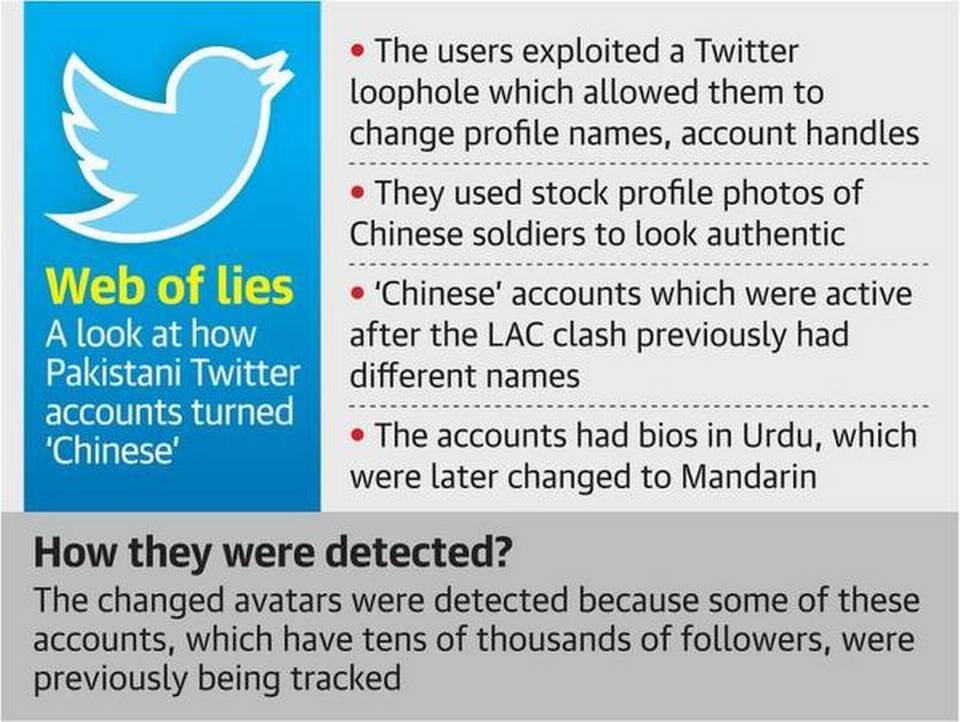Focus: GS-III Internal Security Challenges
Why in news?
Many of the ‘Chinese’ accounts that appeared on social media and spread false information about the border clash with India have been traced to Pakistan, in what is believed to be a coordinated disinformation campaign aimed at India.
Details
- The recent India-China border tensions sparked a first-of-its-kind information war on social media, where Indian and Chinese accounts on Twitter, Facebook and YouTube traded images and videos in an effort to both capture the narrative and the attention of the media.
- Many of the ‘Chinese’ social media accounts that posed as China-based users were actually Pakistani accounts.
- It is also useful to note that Twitter is banned in China, although it can be accessed using virtual private networks.
- These accounts have used a loophole on Twitter that allows users to not only change their profile names, but their Twitter handles as well.
- These accounts have shared false information about casualties from the clash, unrelated images of injured soldiers, and videos of troops’ confrontations that were from previous border incidents.
- This strategy has not been limited to adopting Chinese identities. Pakistani accounts have also recently adopted Nepali and Sri Lankan avatars, all with the same motivation: posting information aimed at creating an unfavourable narrative about India.

What is Fake News?
- Fake news is news, stories or hoaxes created to deliberately misinform or deceive readers.
- Usually, these stories are created to either influence people’s views, push a political agenda or cause confusion and can often be a profitable business for online publishers.
- Combating fake news is a growing narrative of the technology platforms like Facebook, Google, the news media, the government and an informed citizenry.
- Fake news affects free speech and informed choices of the subjects of the country, leading to the hijacking of democracy.
- The advent of social media has decentralized the creation and propagation of fake news.
How to deal with fake news?
The current response to fake news primarily revolves around three prongs — rebuttal, removal of the fake news item and educating the public.
- Rebuttal: It is a form of fact-checking wherein the fake news is debunked by pointing out errors like mismatch, malicious editing and misattribution.
- Removal of Fake news: Technical companies like Facebook and YouTube uses algorithms to proactively remove fake news from their platforms.
- It is impossible to completely ‘remove’ fake news even after rebuttal, given the decentralised nature of dissemination.
- It may be possible to rebut fake news but the ‘fake news factory’ inspired by political agenda, will keep churning out similar stories to advance its chosen narrative.
-Source: The Hindu





